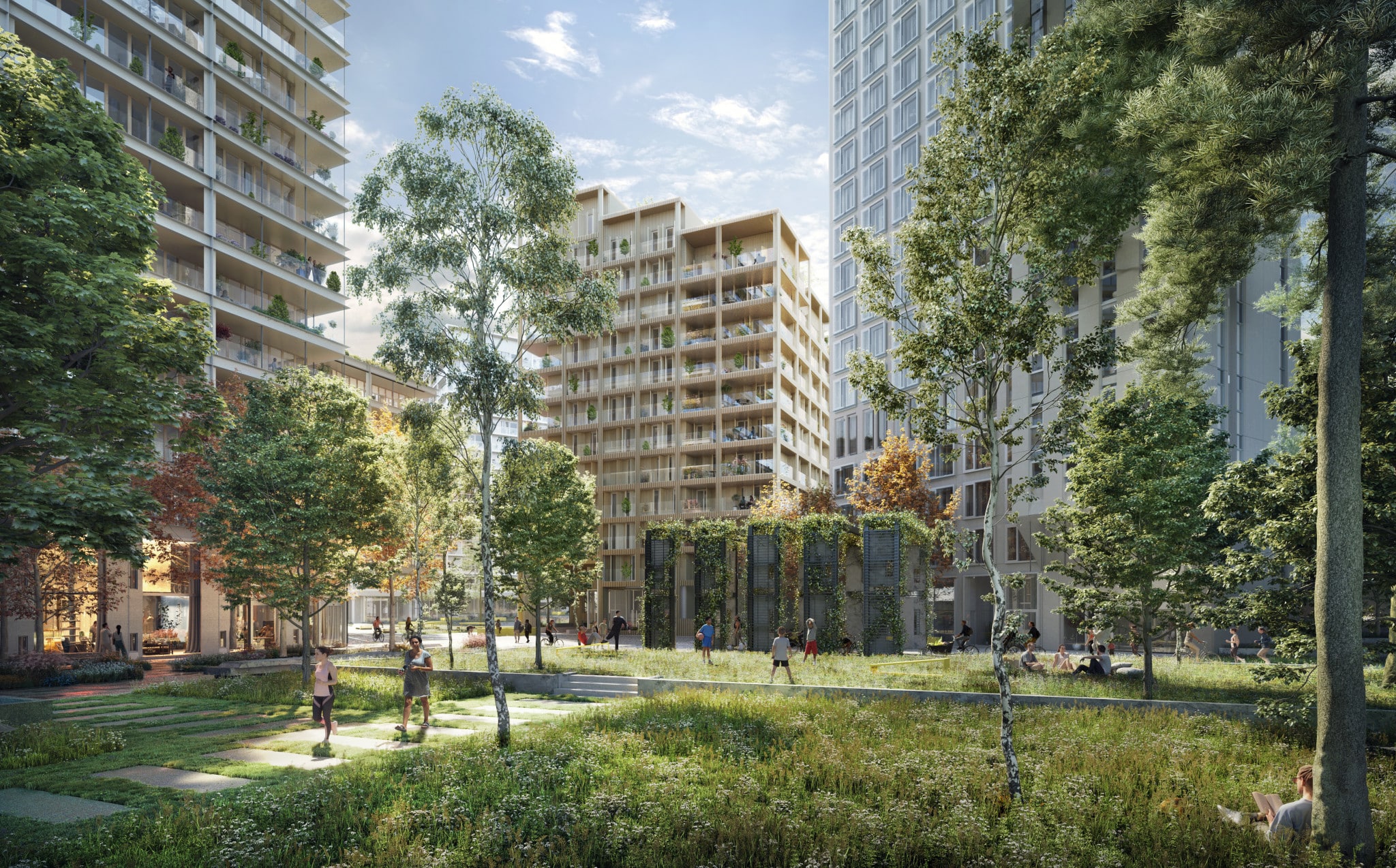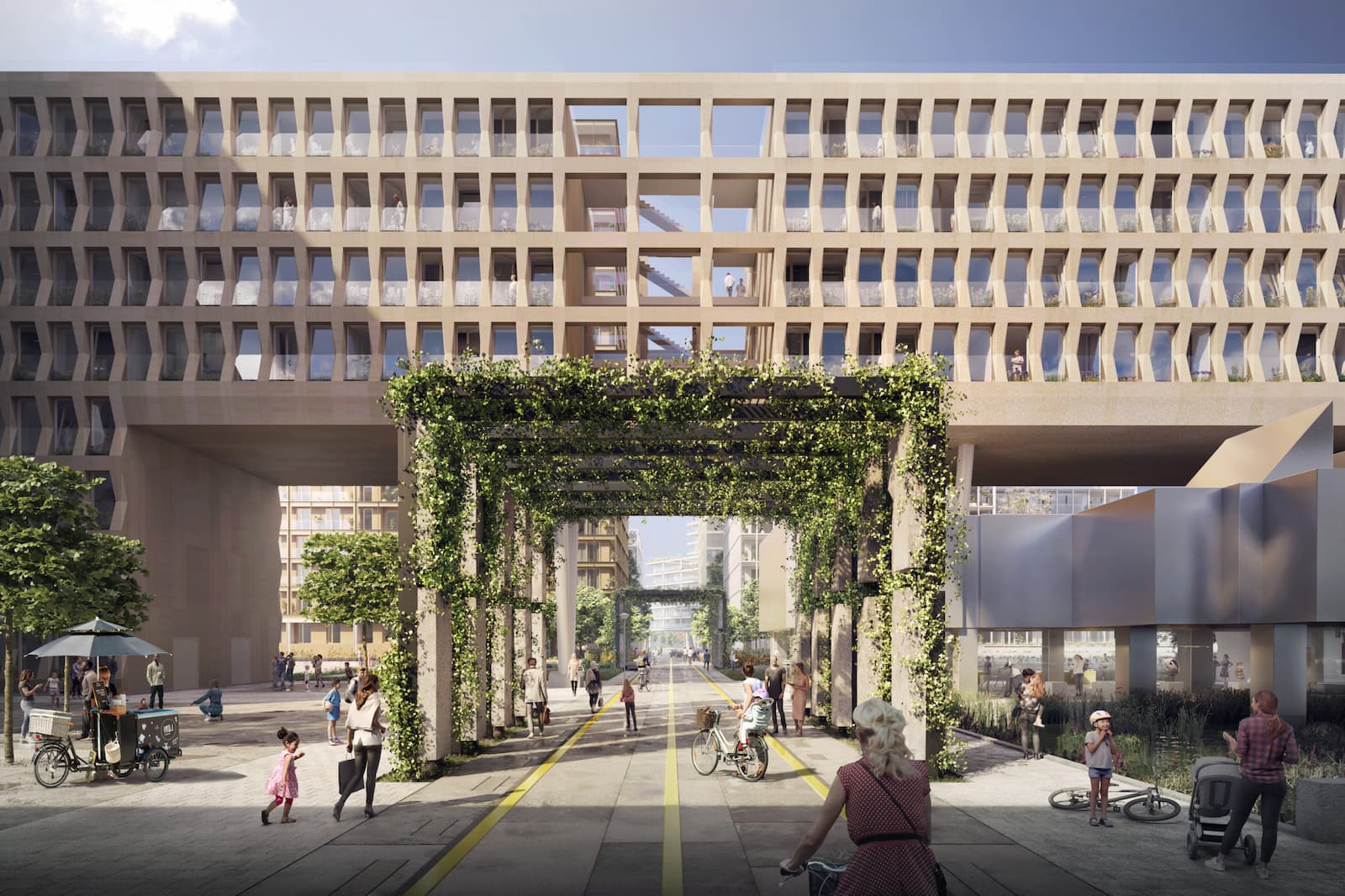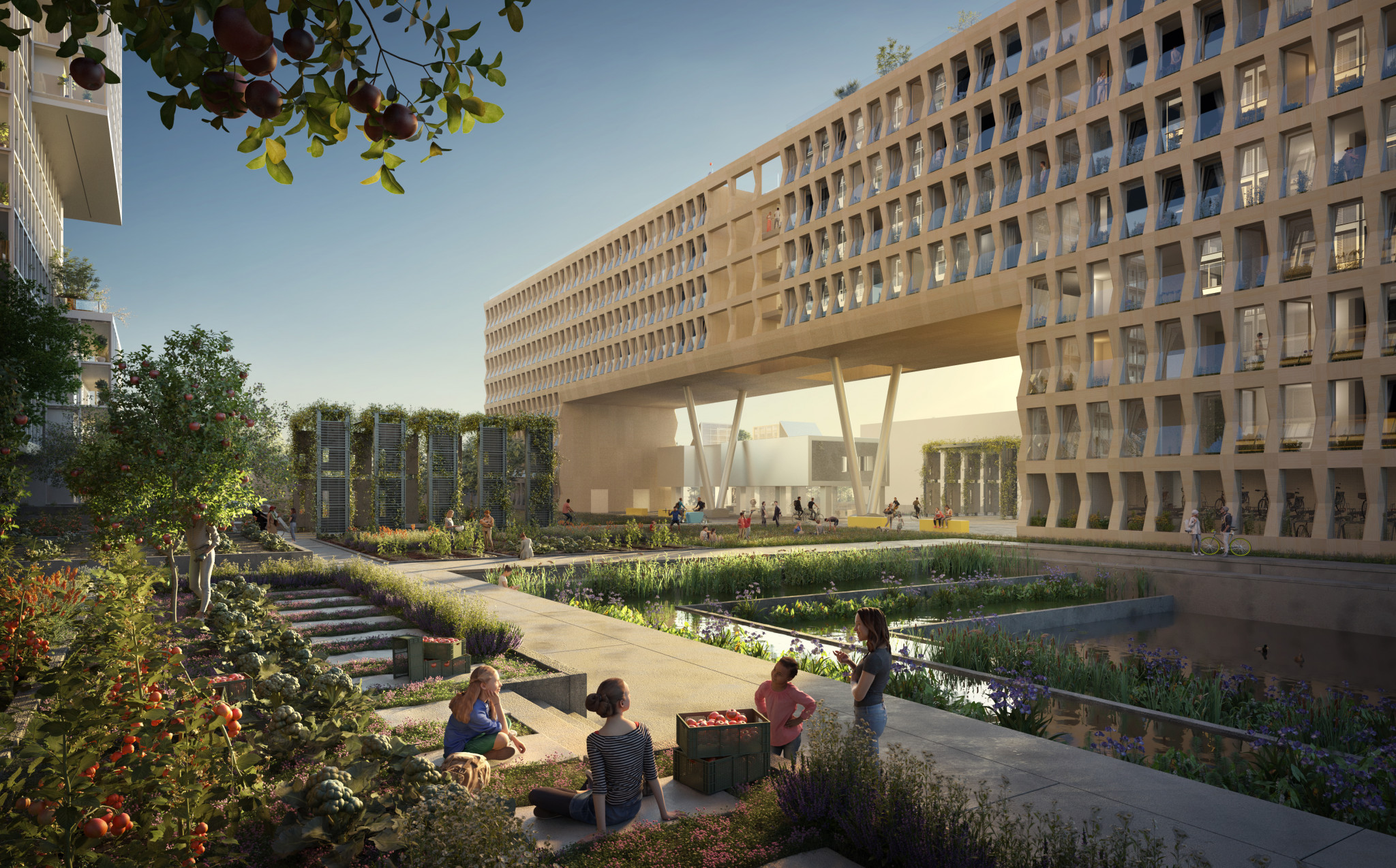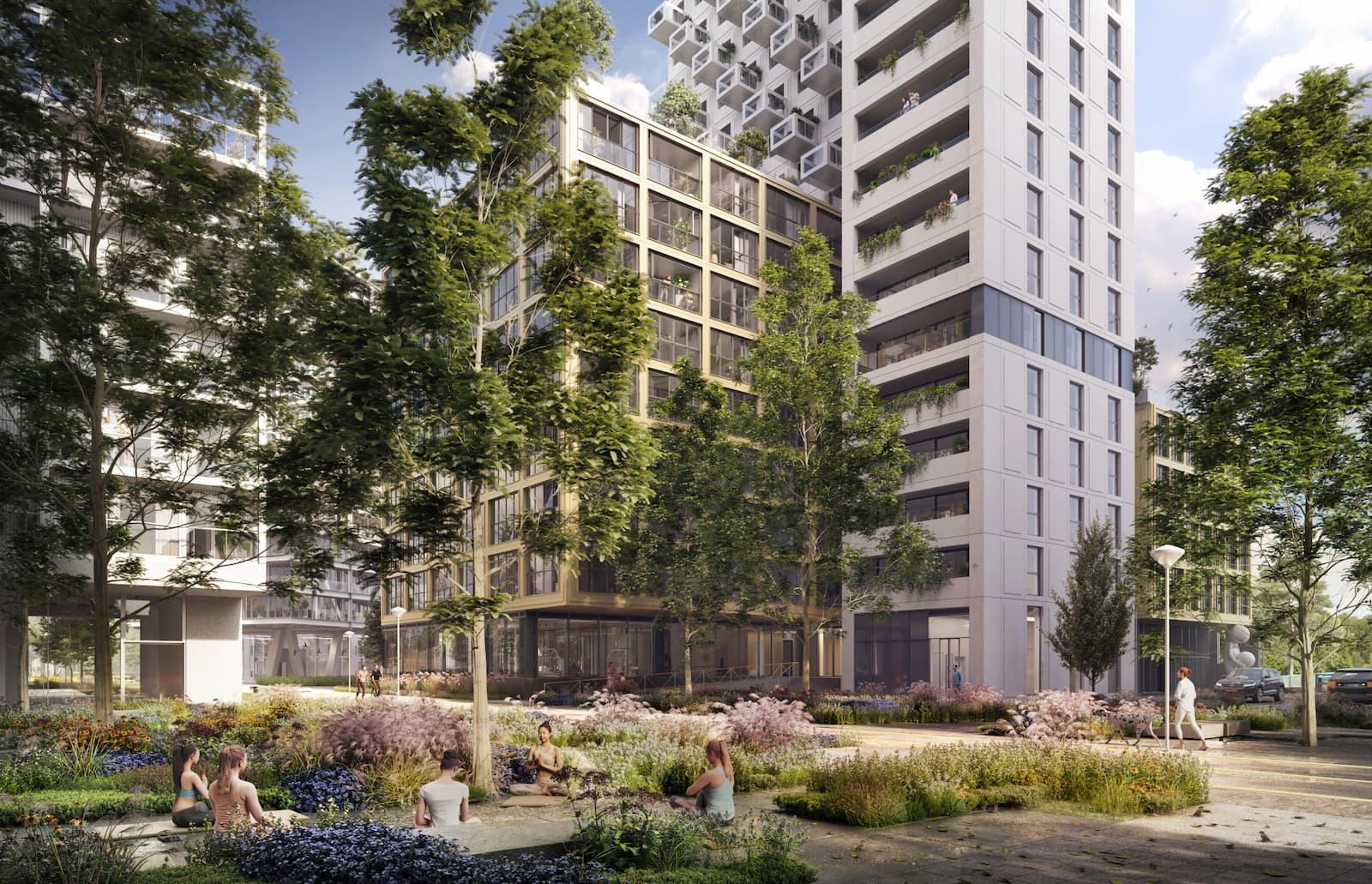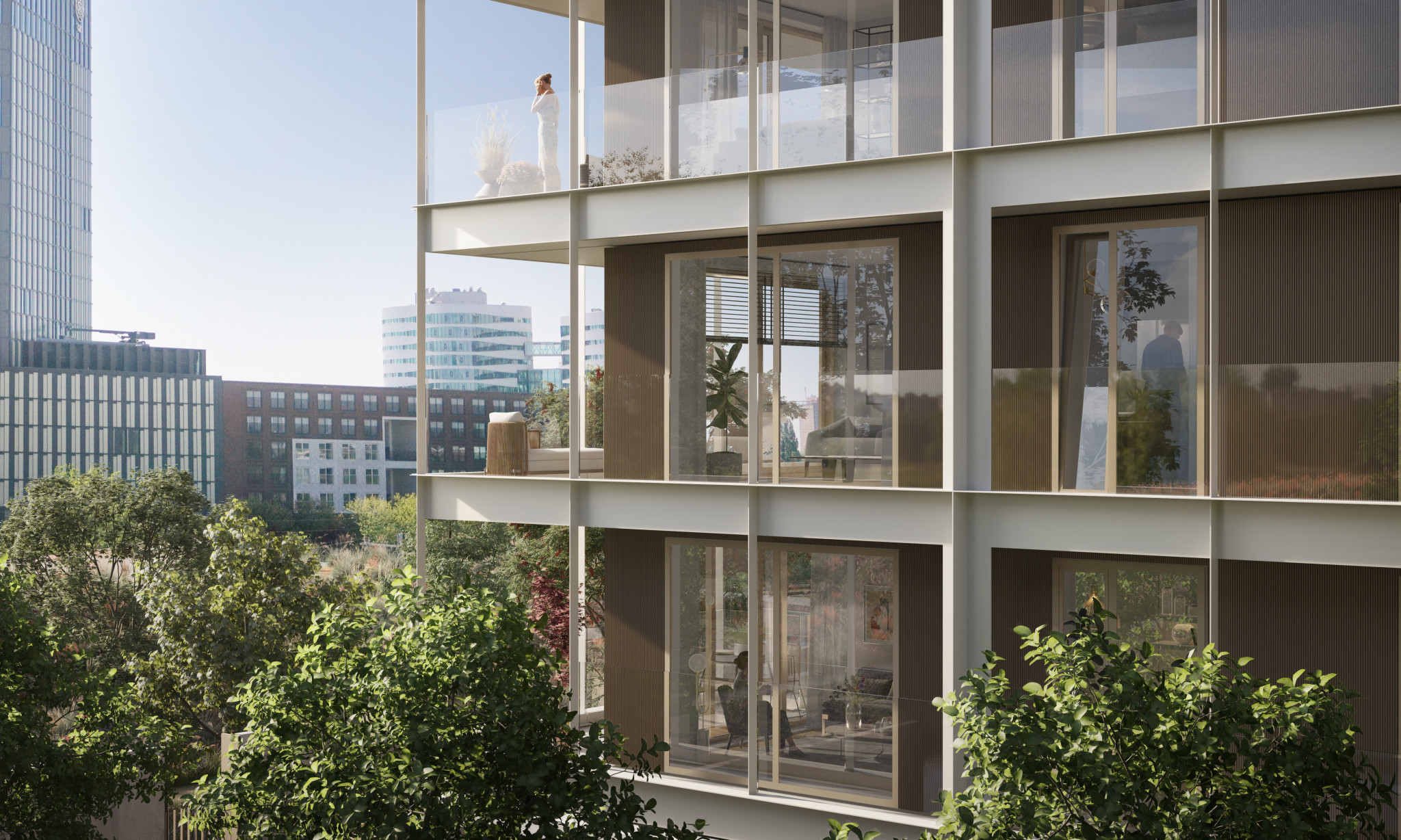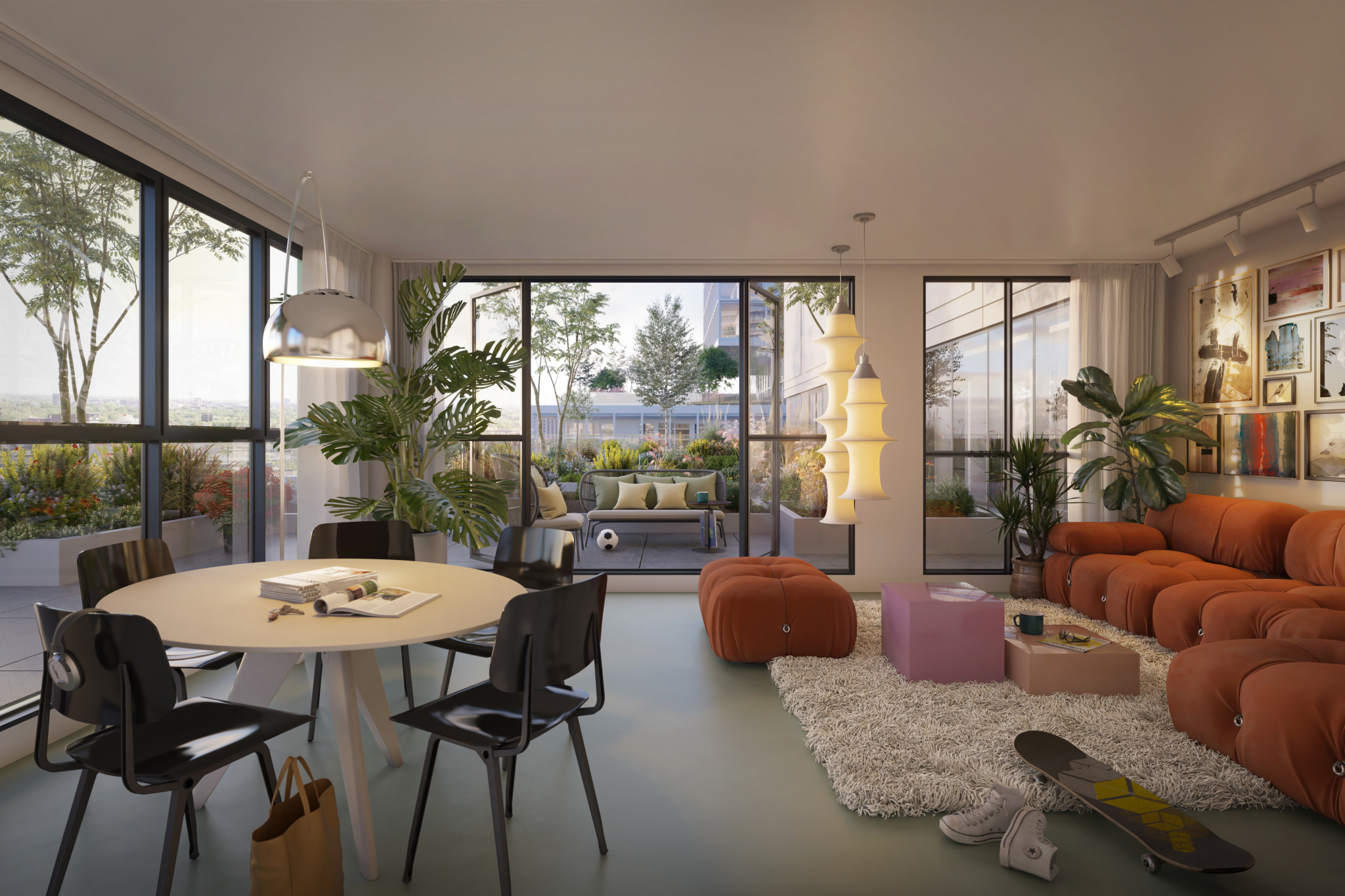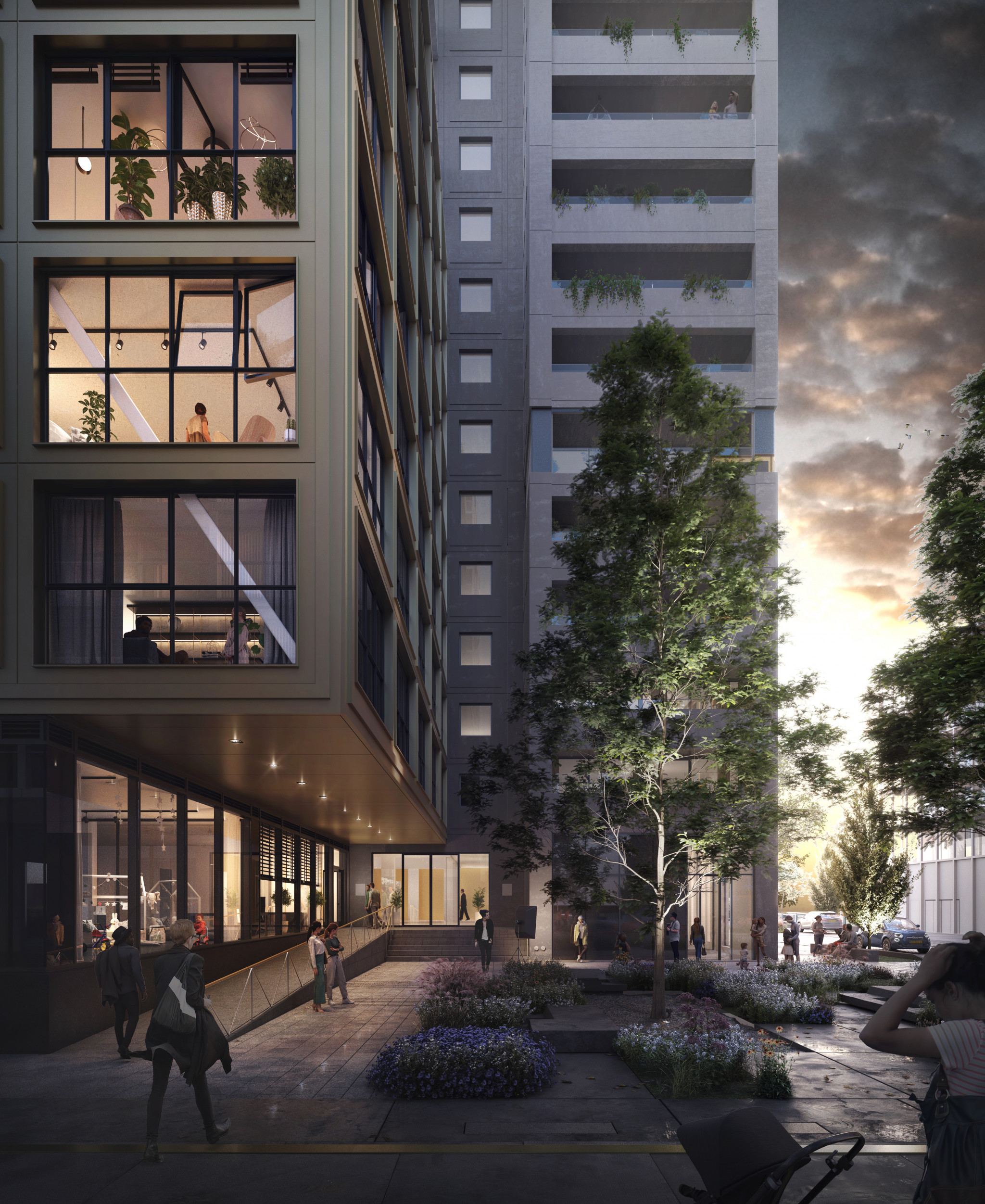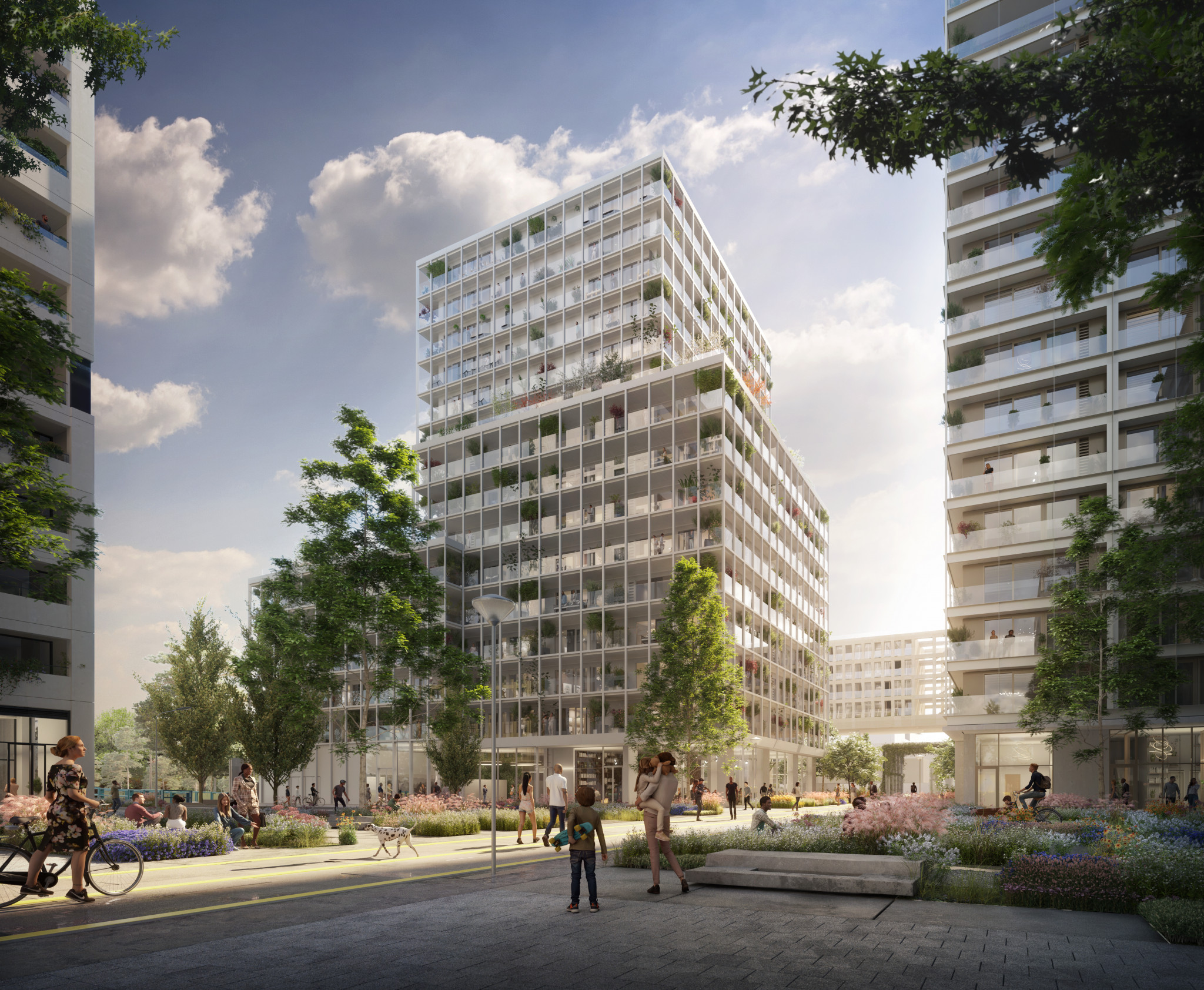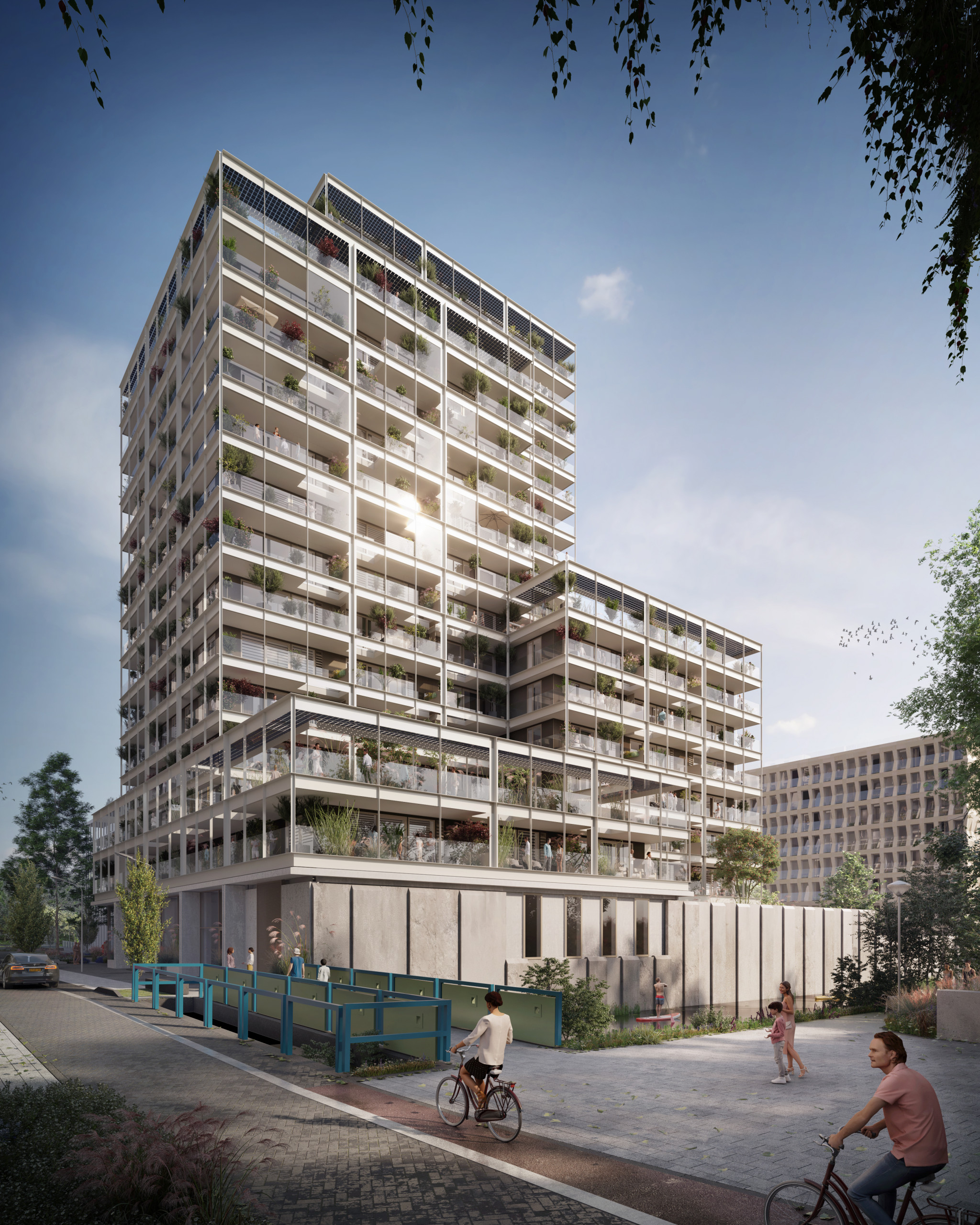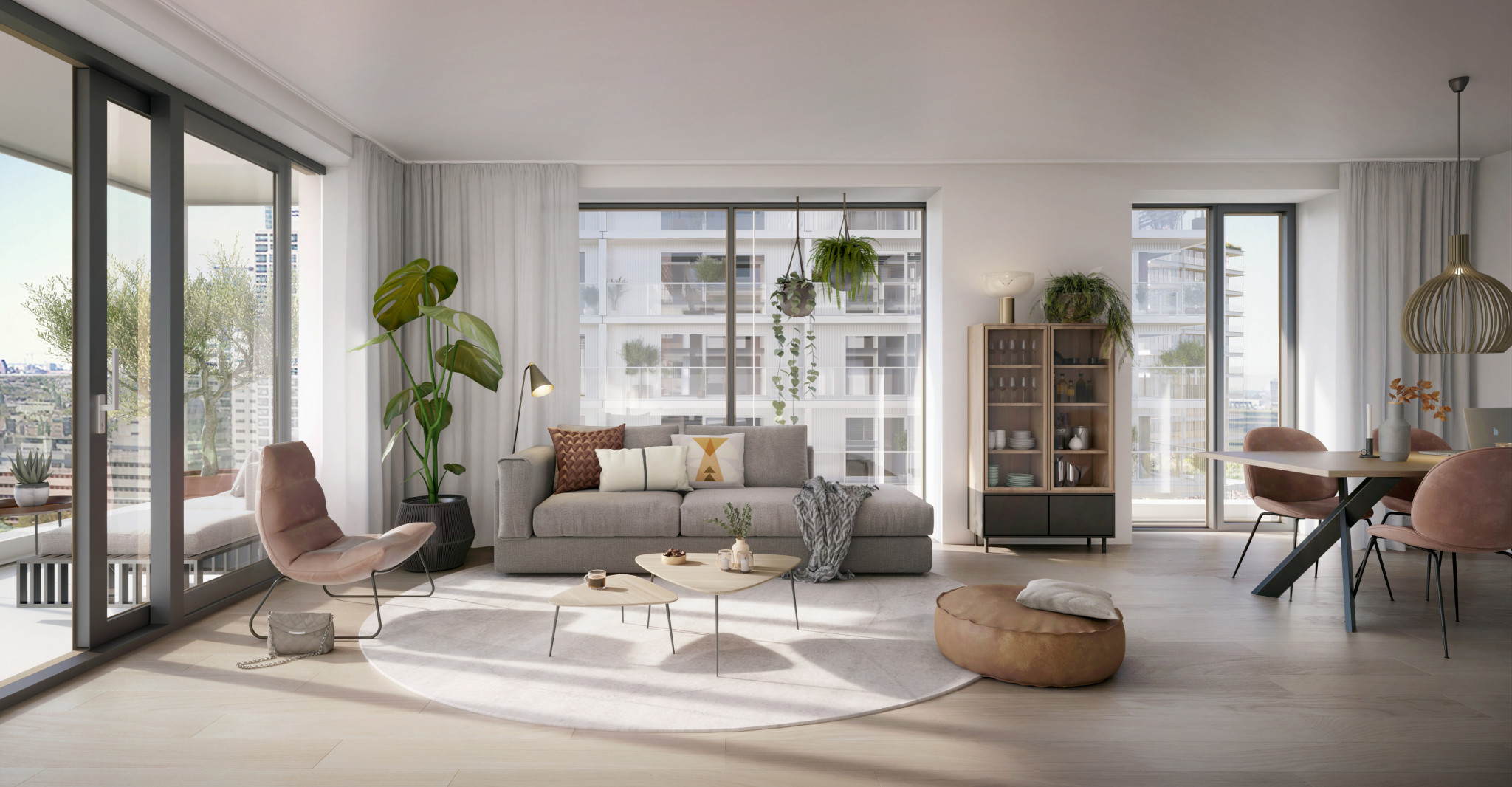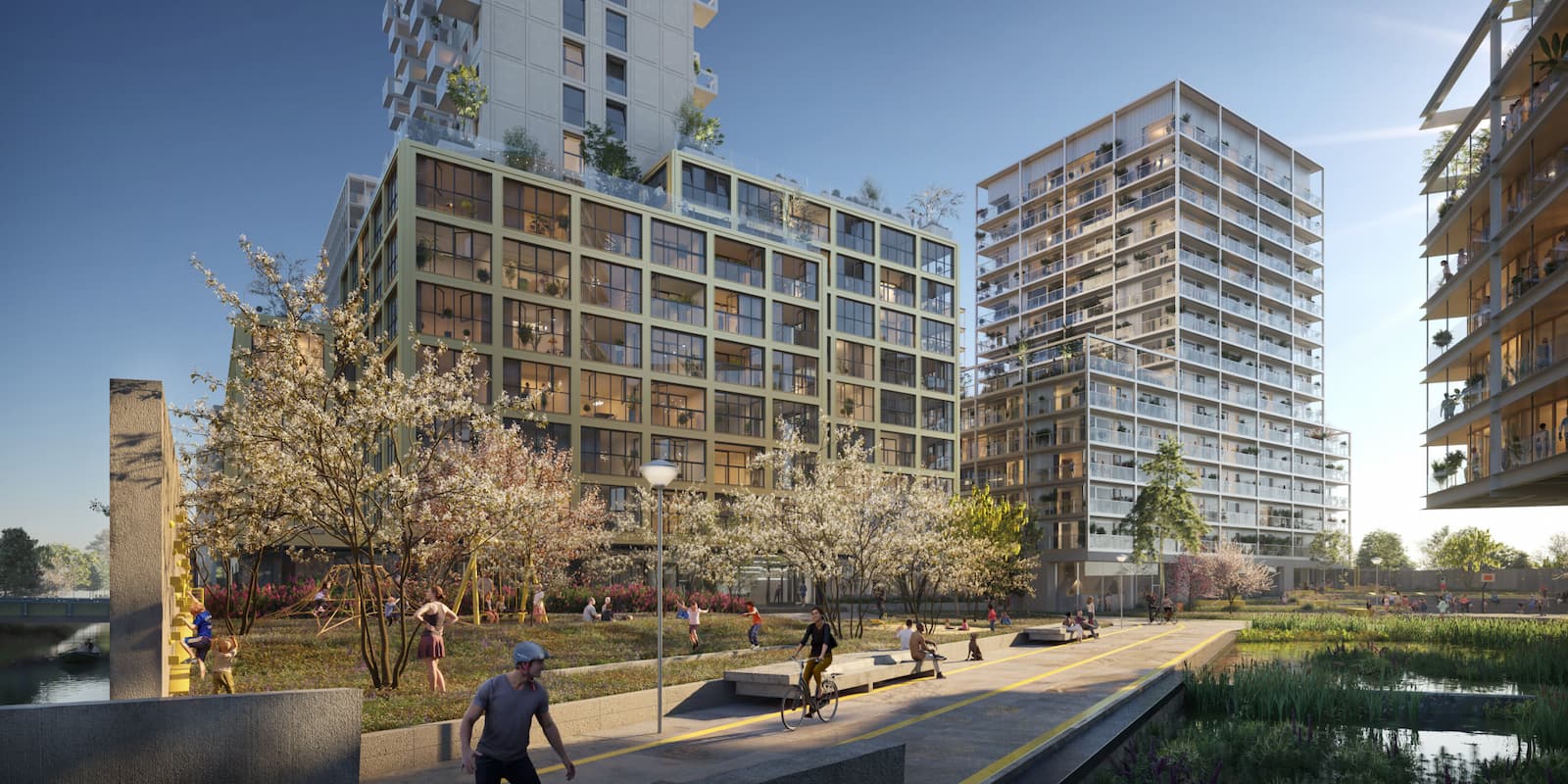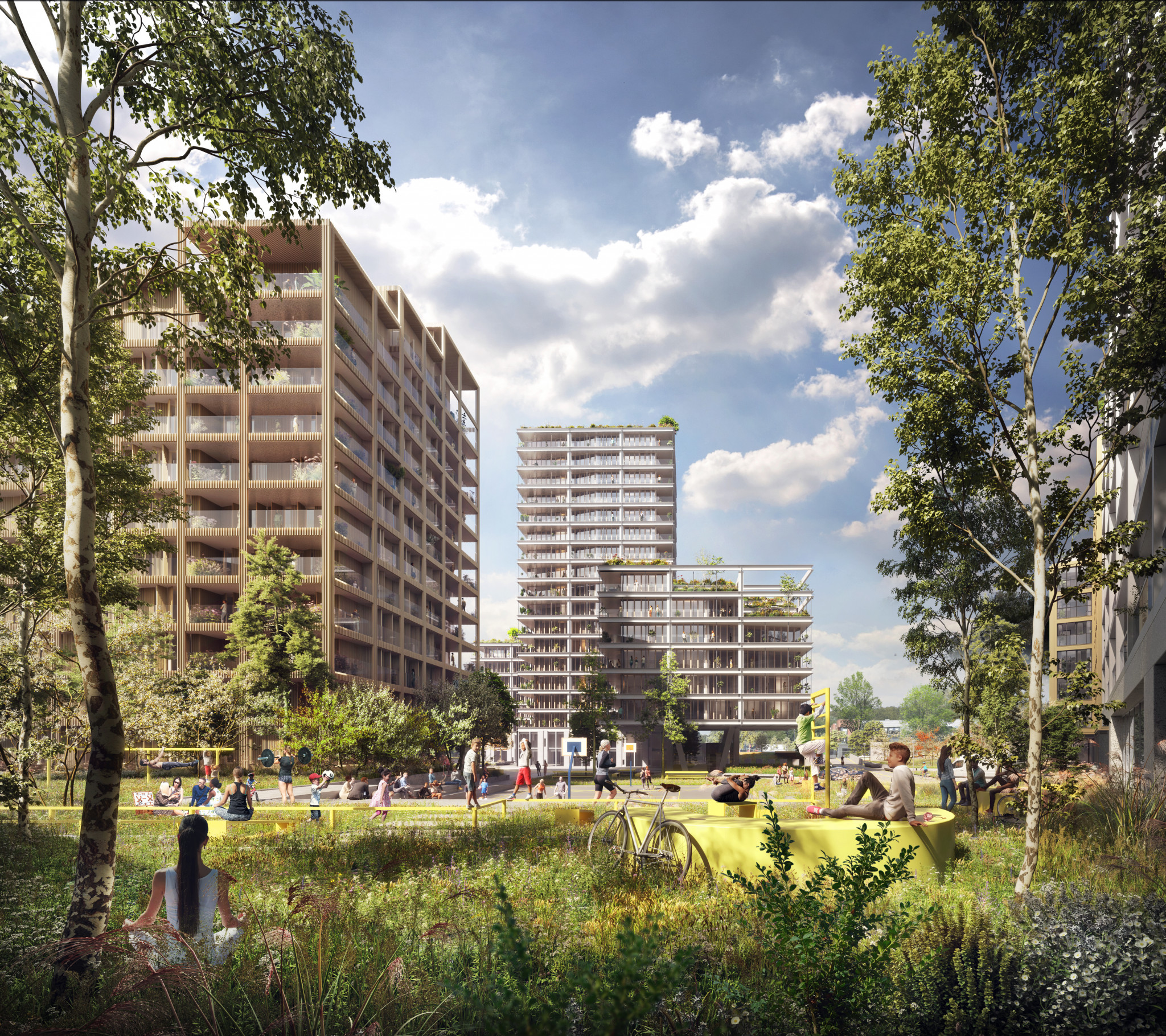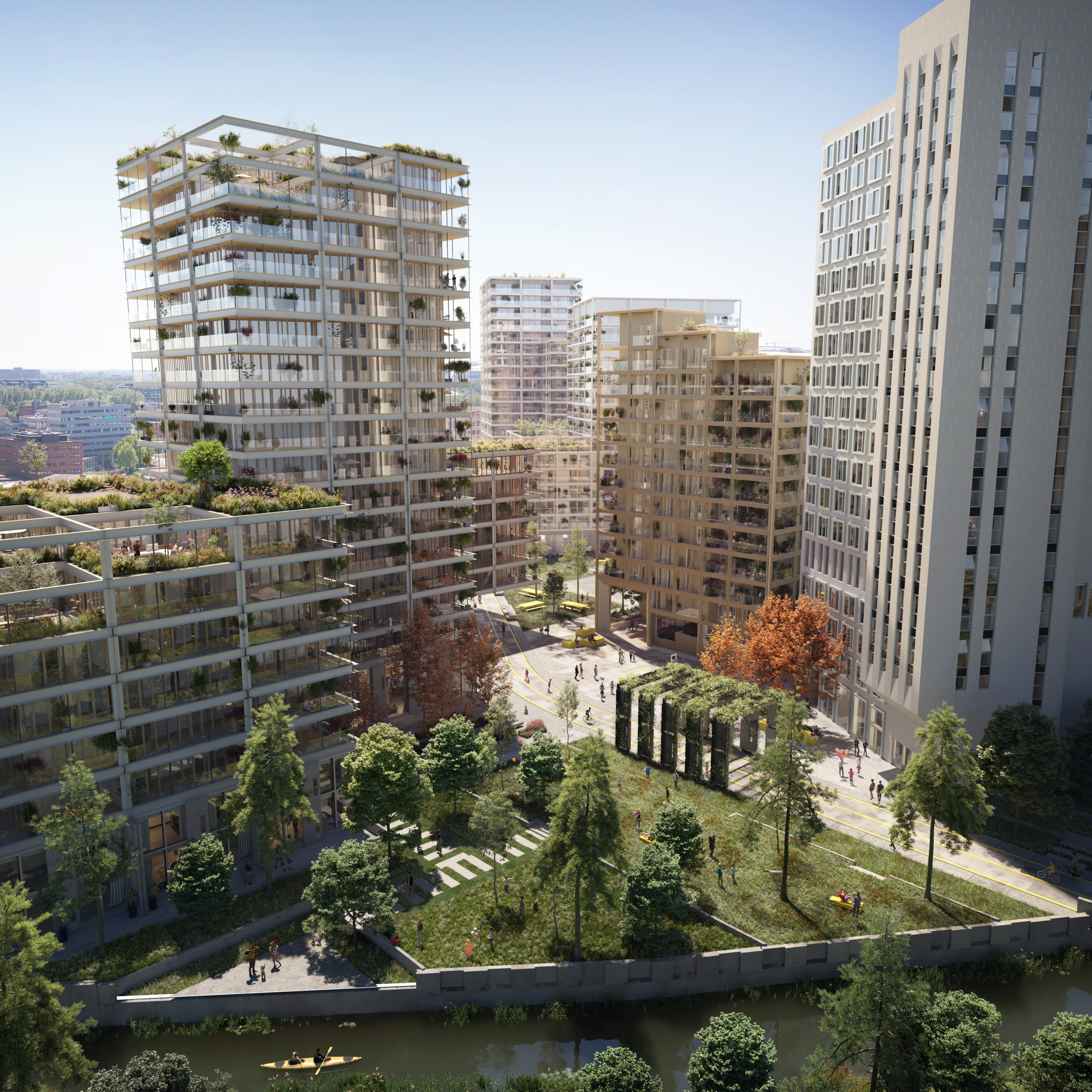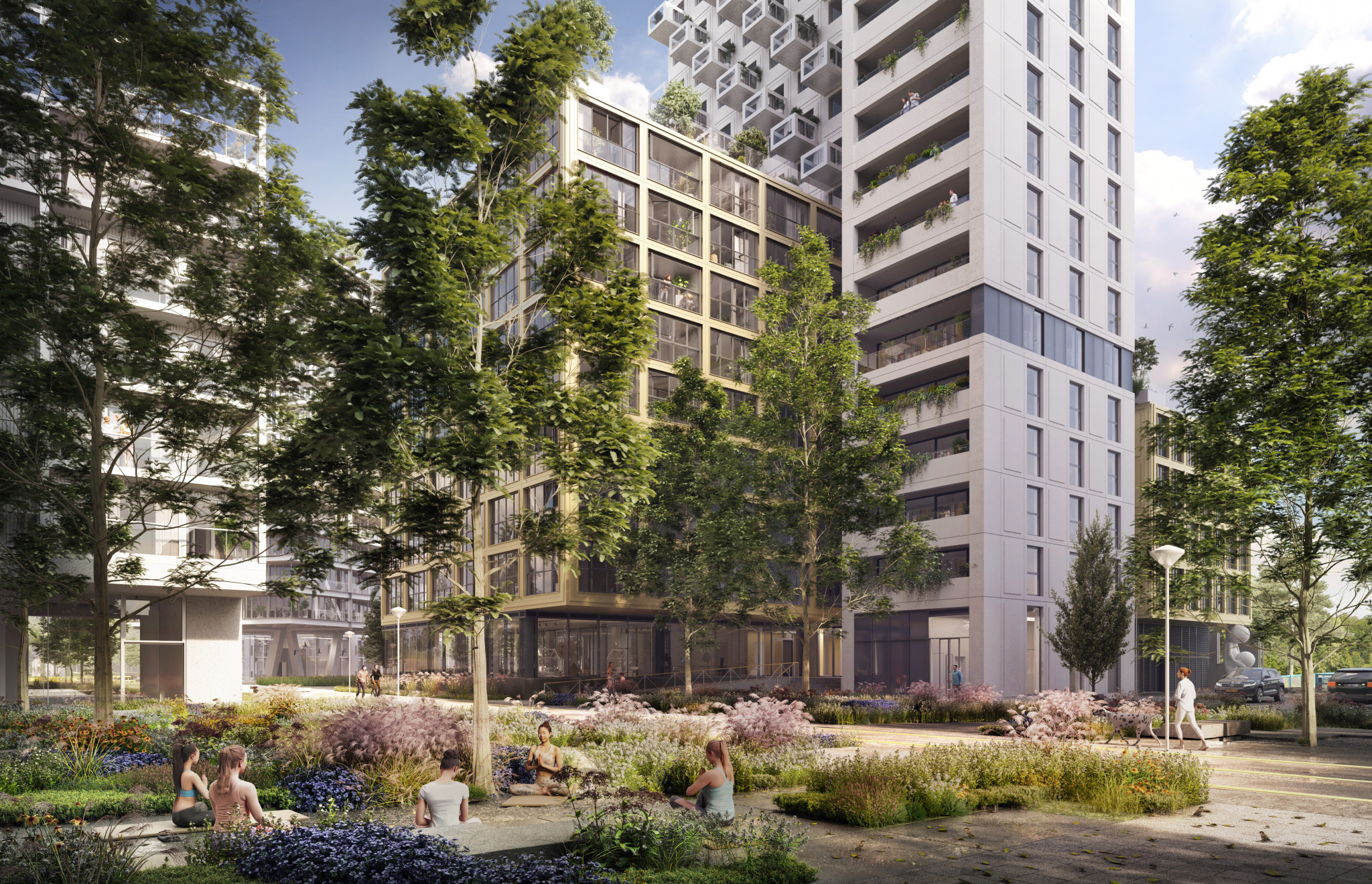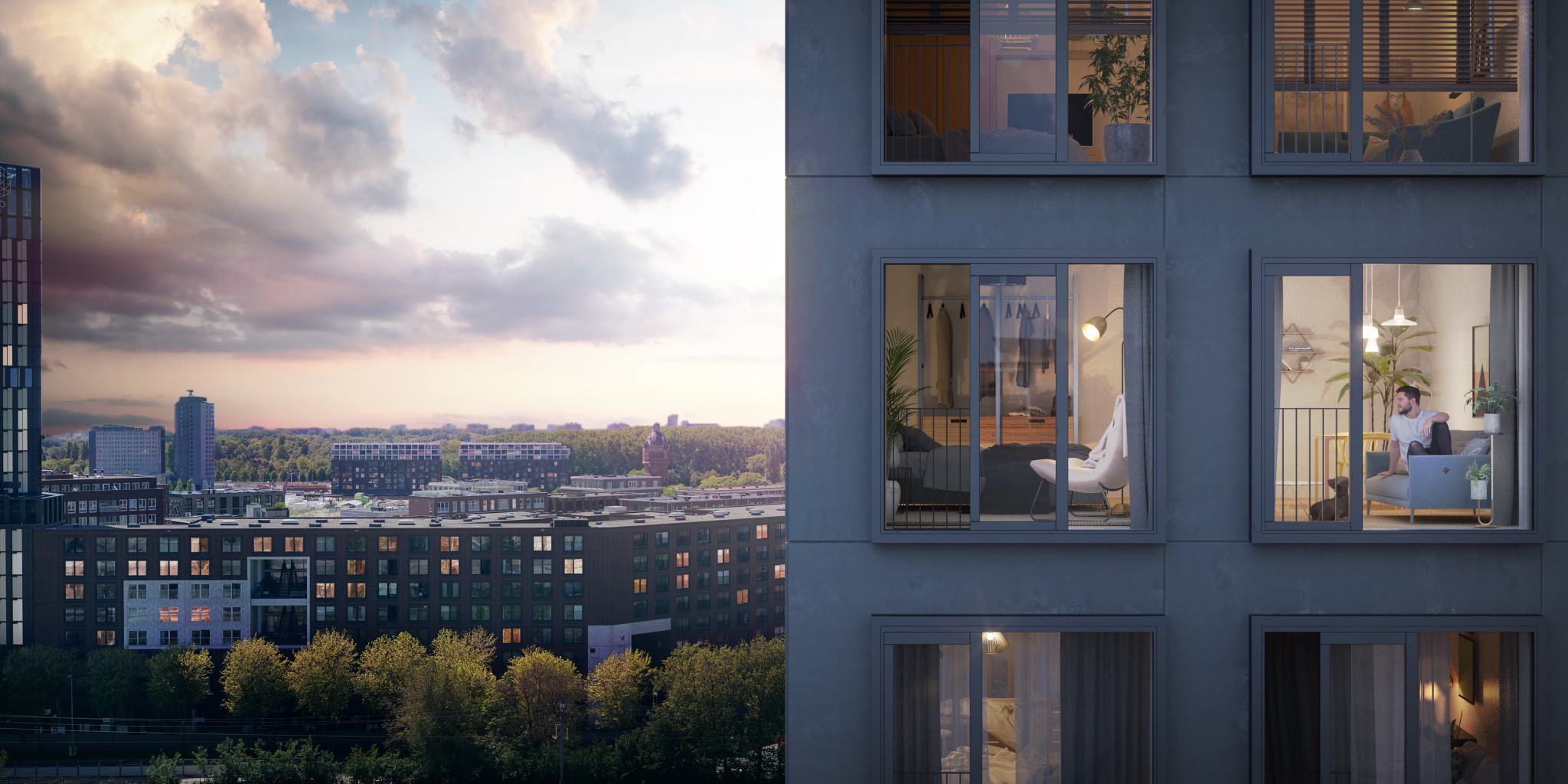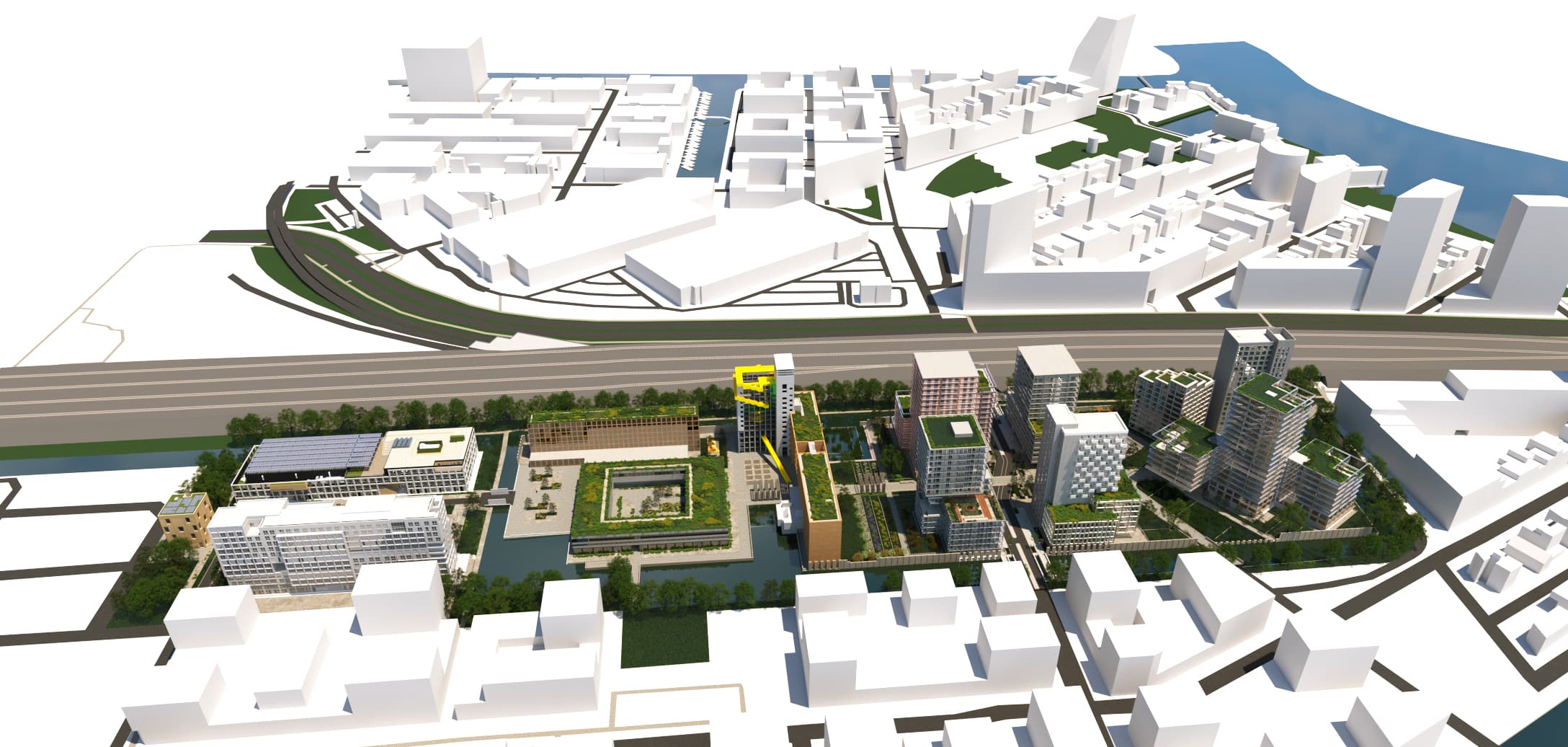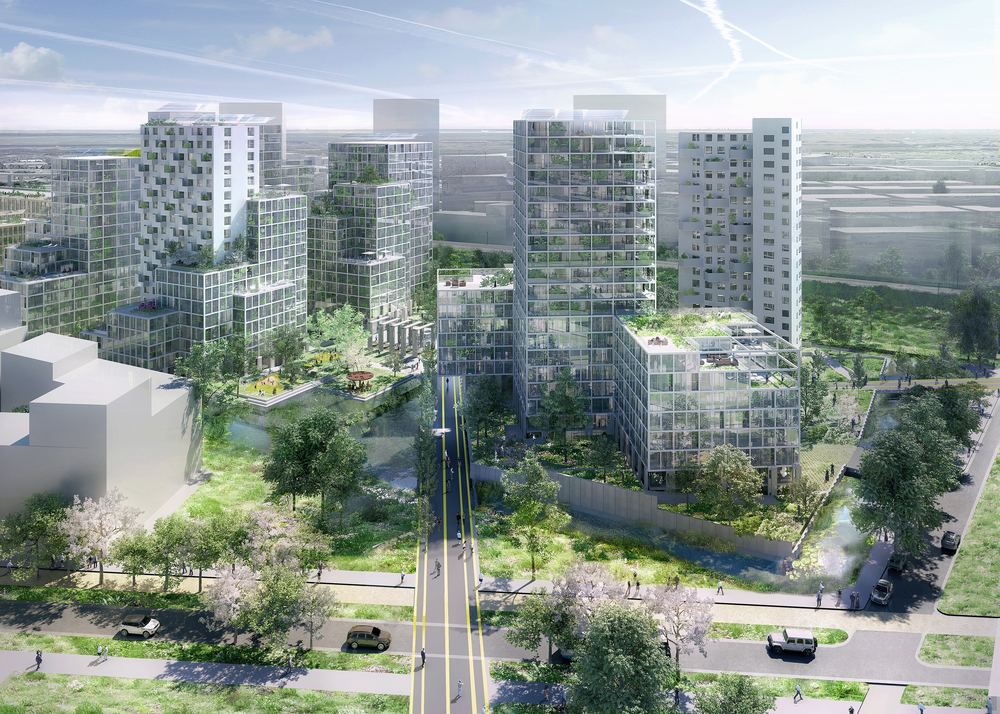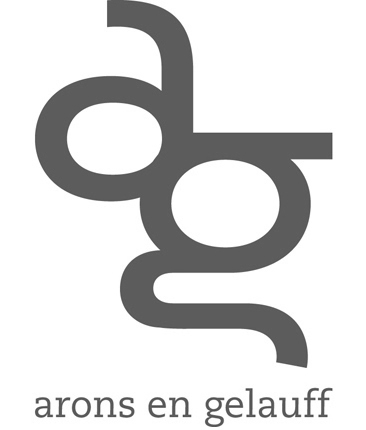- Eefje Voogd Makelaardij 020 - 305 05 60 nieuwbouw@eefjevoogd.nl
- Ramon Mossel Makelaardij 020 - 305 26 62 nieuwbouw@ramonmossel.nl
In Bajeskwartier komen circa 1350 koop- en huurwoningen, werk- en maakplekken. Van groot tot klein, van luxe tot basic en voor verschillende levensstijlen en portemonnees. Allerlei soorten mensen voelen zich hier straks thuis. Bajeskwartier wordt een wijk voor stedelingen die geloven dat de stad ook anders kan. Duurzaam, gezond en creatief.
In Bajeskwartier vind je veel meer dan wonen alleen. Er komen galeries, geweldige restaurants, een klimroute, school, gezondheidscentrum, maakplekken en cafés. Maar ondanks die stedelijke vibe wordt Bajeskwartier ook de groenste wijk van Amsterdam, die uitnodigt tot een gezonde levensstijl. Er worden maar liefst bijna 70 aaneengesloten tuinen aangelegd, afgewisseld met waterpartijen en pleinen.
In de Groene Toren, symbool voor alles waar Bajeskwartier voor staat, komt zelfs een verticaal park en stadslandbouw over verschillende verdiepingen. Overal komt ruimte voor sport en spel.
De tuinen en het groen staan in mooi contrast met de iconische moderne architectuur en de ruige gebouwen van de oude Bijlmerbajes. Deze zichtbare geschiedenis geeft de buurt karakter en maakt het een plek als geen ander.
In Bajeskwartier staat inspiratie, beleven en vooruitgang centraal. Zo doet het Living Lab hier nu en straks, onderzoek naar de stad van de toekomst. Het wordt een innovatieve wijk met aandacht voor duurzaamheid en circulariteit en voor gezond en gelukkig leven in de stad. Bajeskwartier, een vooruitstrevende wijk, met respect voor het verleden van deze roemruchte plek vlakbij de Amstel.
Learning District
Hier draait alles om kennis, educatie en inspiratie. Voor jong en oud. Bekijk item
ondernemen

Design District
Het bruisende, creatieve hart van Bajeskwartier met cultuur, food, wonen en duurzame innovatie. Bekijk item
ondernemen
Groene Toren
Central District
Schitterend wonen in moderne, lichte en gezonde woningen. Bekijk item
ondernemen
Amstel District
Echt stedelijk wonen in een tuinenrijk. Een groene oase vlakbij het centrum van Amsterdam. Bekijk item
ondernemen
Groen
De groenste nieuwe wijk van Amsterdam
Bajeskwartier wordt een groene oase middenin de stad. De woongebouwen staan in een landschap van bijna 70 aaneengeschakelde tuinen. Elke tuin heeft een eigen karakter: zo is er altijd wel een groene plek om te sporten, spelen of juist de rust op te zoeken. Om buren te ontmoeten of ongestoord te tuinieren. Het groen filtert ook fijnstof en zorgt voor biodiversiteit. Bajeskwartier wordt autoluw en heeft fijne wandel- en fietspaden. Parkeren gebeurt alleen ondergronds en bewoners kunnen gebruikmaken van deelvervoer, zoals elektrische fietsen, scooters en auto’s. Hier woon je in het groen, middenin de stad.
meer over groen
meer over de Groene Toren
Duurzaam
Duurzame stad van de toekomst
Bajeskwartier wil de meest duurzame stadswijk van Nederland zijn. De wijk is energieneutraal door het gebruik van zonnepanelen en andere duurzame energiebronnen. Het ‘thermische grid’ wisselt warmte en koude uit in de wijk. Bajeskwartier wordt circulair gebouwd en maar liefst 98% van de materialen van de oude bajes wordt hergebruikt. Zo worden de celdeuren bijvoorbeeld gebruikt in de bruggen en wordt de oude gevangenismuur een klimmuur met nestkasten voor vogels en insecten. Bajeskwartier is natuur inclusief en klimaat adaptief ontworpen. Vooruitstrevende partijen op het gebied van duurzaamheid blijven hier de komende jaren werken aan de stad van de toekomst.
meer over duurzaamheid
Architectuur
Een iconische plek: toen en nu
Bajeskwartier is toekomstgericht, maar wil ook recht doen aan het verleden van deze roemruchte plek. Elf architectenbureaus werken aan Bajeskwartier, onder leiding van het internationaal bekroonde bureau OMA. Dit zorgt naast hoge kwaliteit in architectuur voor variatie en eenheid. Alle gebouwen in de wijk krijgen een eigen identiteit en worden modern, opvallend en iconisch.
Maar er blijven ook delen van de voormalige bajes behouden. Het hoofdgebouw bijvoorbeeld, grote delen van de muur, één van de torens en de stedenbouwkundige opzet van een lange verbindingsstraat met daaraan de gebouwen. Ook wordt de ooit ontworpen, maar nooit gerealiseerde, ‘zevende toren’ alsnog gebouwd.
meer over architectuur
Locatie
Het nieuwe Amsterdam oost
Dicht bij Station Amstel en op nog geen 10 minuten fiets van de binnenstad van Amsterdam, ligt Bajeskwartier op een ideale plek. In het bruisende Overamstel, naast Amstelkwartier en binnen de ring. De metro stopt voor de deur en ook uitvalswegen zijn binnen 5 autominuten bereikbaar. Je bent dus zo de wijk uit, mocht je dat willen. Bajeskwartier zelf heeft namelijk veel te bieden. En ook de omgeving is het ontdekken waard. Overamstel is een levendig nieuw gebied in Amsterdam oost met een stadsstrand, geweldige horeca, werkplekken, kunstruimten en andere hotspots.
meer over de locatie
Gezondheid
Healthy Urban Living
Bajeskwartier is een voorbeeldwijk voor Healthy Urban Living. Het ontwerp van de wijk draagt bij aan gezond en gelukkig leven. Door lichte woningen te maken, met duurzame materialen, goede akoestiek en een gezond binnenklimaat. Door auto’s zoveel mogelijk te weren uit de wijk en ondergronds te parkeren, en fijnstof te filteren. Maar ook door een schitterend landschap te creëren, met ruimte voor speelplekken, moestuinen, sporten en wandelen. Voor ontmoetingen en voor rust. Het Living Lab doet constant nieuwe kennis op om Bajeskwartier gezond te houden, nu en in de toekomst.
meer over gezondheid
Historie
Amsterdams icoon met roemrucht verleden
Bajeskwartier komt op de plek van de voormalige ‘Bijlmerbajes’. De gevangenis die overigens niet in de Bijlmer stond maar dus in Overamstel. Allerlei bekende criminelen zaten hier hun straf uit. De bajes werd in 1978 opgeleverd door architect Jacoba Pot-Keegstra. Het gebouw zonder tralies en hekken paste bij de tijdgeest van de jaren 70: niet bestemd om te straffen, maar juist om criminelen ‘beter te maken’. Na tientallen ontsnappingen werd de bajes alsnog een traditionele gevangenis. Na het sluiten van de gevangenis schreef het Rijksvastgoedbedrijf een prijsvraag uit voor een nieuwe invulling. Bajeskwartier is daarvan de trotse winnaar.
meer over historie
Planning Bajeskwartier
Partners
Bajeskwartier komt tot stand in samenwerking met veel verschillende partijen. Groot en klein, voor langere of kortere periode. Hieronder een overzicht.
